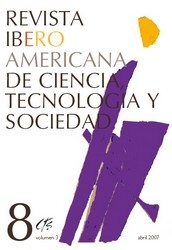Socialization in the Digital Present
Informalization and Contextualization
DOI:
https://doi.org/10.52712/issn.1850-0013-941Keywords:
new technologies, youth, socialization, informalization, contextualizationAbstract
In this paper we formulate the thesis that the present generation of young people is socialized mainly through the use of technology, but not only by it. Nowadays, too, growth takes place in the framework of the family, the contemporary pairs, as well as in formal and informal environments. The condition of boy or young, in addition, is still influenced by the social environment. This confronts boys and youngsters with new worlds of experience that constitute them in a new generation. The new with reference to the past is that boys and teenagers grow in a (tele)communicative way, and connected to the network, and through this activity they can postpone the learning of other social competences. The dissolution of clear links -i.e. the informalization of relations- is correlated with the demand of developing meaningful usage modes, through ways of use that require self initiative and determination. i.e. through an individual contextualization.
Downloads
References
BECK, Ulrich (1998): La sociedad del riesgo, Barcelona, Paidós.
BECK, Ulrich y Wolfgang BONß (eds.) (2001): Die Modernisierung der Moderne, Frankfurt am Main, Suhrkamp.
BOURDIEU, Pierre (1983): “Ökonomisches Kapital - Kulturelles Kapital - Soziales Kapital”, en P. Bourdieu: Die verborgenen Mechanismen der Macht, Frankfurt am Main, Suhrkamp, pp. 49-80.
CASTELLS, Manuel (1996): The Rise of the Network Society, Cambridge MA / Oxford UK, Blackwell Publishers.
CHEN, W. y B. WELLMAN (2004): “The Global Digital Divide - Within and Between Countries”, IT & Society, Vol. 1, Issue 7, Spring / Summer, pp. 39-45.
GIDDENS, Anthony (1993): Consecuencias de la modernidad, Madrid, Alianza.
GROEBEL, J. y G. GEHRKE (eds.) (2003): Internet 2002: Deutschland und die digitale Welt. Internetnutzung und Medieneinschätzung in Deutschland und nordrhein-Westfalen im internationalen Vergleich, Opladen, Leske und Budrich.
HAHN, Andre y Matthias JERUSALEM (2001): “Internetsucht”, en J. Raithel (ed.): Risikoverhaltensweisen Jugendlicher, Opladen, Leske und Budrich, pp. 279-294.
HARGITTAI, E. (2003): The Digital Divide and What To Do About It, documento de trabajo, disponible en http://www.eszter.com/papers/c04-digitaldivide.html
IPA (2006): TouchPoints Survey 2006, disponible en http://www.ipa.co.uk/touchpoints/Pressrelease230306.cfm (8.10.2006).
JIM (2005): Jugend, Information, (Multi-)Media. Basisuntersuchung zum
Medienumgang 12- bis 19-Jähriger, Medienpädagogische Forschungsverbund Südwest, Baden-Baden.
JUGEND (2002): 14. Shell Jugendstudie, editado por Jugendwerk der Deutschen Shell, Opladen, Leske und Budrich.
JUGEND (2006): 15. Shell Jugendstudie, editado por Jugendwerk der Deutschen Shell, Frankfurt am Main, Fischer Taschenbuchverlag.
KIM (2005): Kinder und Medien, Computer und Internet. Basisuntersuchung zum Medienumgang 6- bis 13-Jähriger, Medienpädagogischer Forschungsverbund Südwest, Baden-Baden.
KEUPP, H., R. HÖFER, A. JAIN, W. KRAUS y W. STRAUS (2001): Soziale Landschaften in der reflexiven Moderne - Individualisierung und posttraditionale
Ligaturen, Frankfurt am Main, Suhrkamp.
LANDESSTIFTUNG BADEN - WÜRTTEMBERG (ed.) (2005): Jugend und verantwortungsvolle Mediennutzung - Medien und Persönlichkeitsentwicklung, Stuttgart.
LUHMANN, Niklas (1996): Teoría de la sociedad y pedagogía, Barcelona, Paidós.
LUHMANN, Niklas (1997): Observaciones de la modernidad. Racionalidad y
contingencia en la sociedad moderna, Barcelona, Paidós.
LUHMANN, Niklas (1998): Die Gesellschaft der Gesellschaft, Frankfurt am Main.
MANNHEIM, Karl (1928): “Das Problem der Generationen”, Kölner Vierteljahreshefte für Soziologie 1928/1929, pp. 157-185 y 329-330.
MEAD, George Herbert (1973): Geist, Identität und Gesellschaft, Frankfurt am Main, Suhrkamp.
MORDUCHOWICZ, Roxana (2003): El capital cultural de los jóvenes, Buenos Aires, Fondo de Cultura Económica.
OTTO, H.-U. y N. KUTSCHER (eds.) (2004): Informelle Bildung online. Perspektiven für Bildung, Jugendarbeit und Medienpädagogik, Munich, Weinheim, Jumenta.
OTTO, H.-U., N. KUTSCHER, A. KLEIN y S. ISKE (2004): “Soziale Ungleichheit im virtuellen Raum: Wie nutzen Jugendliche das Internet?, Erste Ergebnisse einer empirischen Untersuchung zu Online-Nutzungsdifferenzen und Aneignungsstrukturen von Jugendlichen”, Manuskript Universität Bielefeld.
PRANGE, Klaus y Gabriele STROBEL-EISELE (2006): Die Formen des pädagogischen Handelns. Eine Einführung, Stuttgart, Kohlhammer.
SENNETT, R. (2000): La corrosión del carácter. Las consecuencias personales del trabajo en el nuevo capitalismo, Barcelona, Anagrama.
SOMBART, Werner (1987): Der moderne Kapitalismus. Band I und II, München, Deutscher Taschenbuch Verlag.
TAPSCOTT, Don (1998): Growing up digital. The Rise of the Next Generation, New York, McGraw-Hill.
TULLY, Claus J. (2002): “Youth in motion: Communicative and mobile. A commentary from the perspective of youth sociology”, Young, Vol. 10, Nº 2, pp. 19-43.
TULLY, Claus J. (2003): “Growing Up in Technological Worlds. How modern technologies shape the modern lives of young people”, Bulletin of Science, Technology & Society, Vol. 23, Nº 6, pp. 444-45.
TULLY, Claus J. (2004): “Alltagslernen in technisierten Welten: Kompetenzerwerb durch Computer, Internet und Handy”, en P. Wahler, C. J. Tully y C. Preiß (eds.): Jugendliche in neuen Lernwelten, Wiesbaden, VS-Verlag.
TULLY, Claus J. (en prensa): “Informalización y contextualización. Uso y apropiación asistemática de las nuevas tecnologías”, Revista Internacional de Sociología.
URRY, John (2003): “Social networks, travel and talk”, British Journal of Sociology 54, pp. 155-175.
WAHLER, P., C. J. TULLY y Ch. PREIß (2004): Jugendliche in neuen Lernwelten, Wiesbaden, VS- Verlag.
WEBER, Max (1956): Wirtschaft und Gesellschaft, Tübingen, Mohr.
Downloads
Published
How to Cite
Issue
Section
License
Copyright (c) 2025 CC Attribution 4.0

This work is licensed under a Creative Commons Attribution 4.0 International License.
All CTS's issues and academic articles are under a CC-BY license.
Since 2007, CTS has provided open and free access to all its contents, including the complete archive of its quarterly edition and the different products presented in its electronic platform. This decision is based on the belief that offering free access to published materials helps to build a greater and better exchange of knowledge.
In turn, for the quarterly edition, CTS allows institutional and thematic repositories, as well as personal web pages, to self-archive articles in their post-print or editorial version, immediately after the publication of the final version of each issue and under the condition that a link to the original source will be incorporated into the self-archive.











